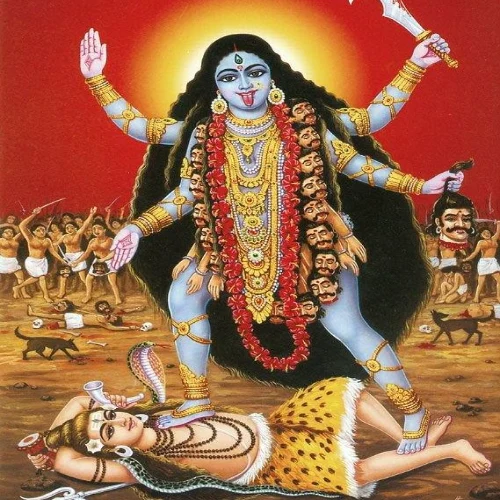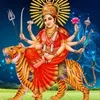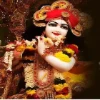Dakshina Kalika, also known as "Dakshina Kali" or "Dakshina Kali Mata," is a revered form of the goddess Kali in Hinduism. She is particularly venerated in the Shakta tradition and is associated with aspects of power, protection, and transformation. Here’s a detailed look at Dakshina Kalika:
Key Aspects of Dakshina Kalika:
Name and Meaning:"Dakshina" refers to the south direction, and "Kalika" is another name for Kali, a goddess known for her fierce and protective nature. Dakshina Kalika is often associated with the southern direction and is believed to possess unique attributes compared to other forms of Kali.
Iconography: Dakshina Kalika is typically depicted in a powerful and dynamic posture. She may be shown with a fierce expression, adorned with a garland of skulls, and holding various weapons or symbolic items. Her iconography emphasizes her role as a protector and transformer.
Symbolism: As a form of Kali, Dakshina Kalika represents the destructive and transformative forces of the universe. She embodies the power to destroy negativity and ignorance, paving the way for renewal and spiritual growth.
Worship and Rituals: Devotees often worship Dakshina Kalika through specific rituals and mantras aimed at invoking her protective and transformative energies. Offerings and ceremonies are conducted in temples and personal shrines to seek her blessings.
Temples and Worship Sites: Dakshina Kalika is worshipped in various temples, particularly in regions where Kali is prominently revered. One notable temple is the Dakshina Kali Temple in Kolkata, India. This temple is a significant site for her devotees and is renowned for its association with Kali worship.
Philosophical Significance: In the broader context of Shakta and Tantric traditions, Dakshina Kalika is seen as a manifestation of the divine feminine power that controls the forces of creation, preservation, and destruction. Her worship emphasizes the balance between these forces and the need for transformation in spiritual practice.
Dakshina Kalika holds a special place in the hearts of her devotees, symbolizing both the fearsome and nurturing aspects of the divine feminine. Her worship involves deep spiritual practices and is aimed at achieving protection, transformation, and enlightenment.








